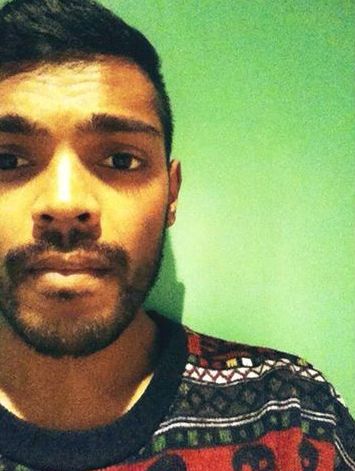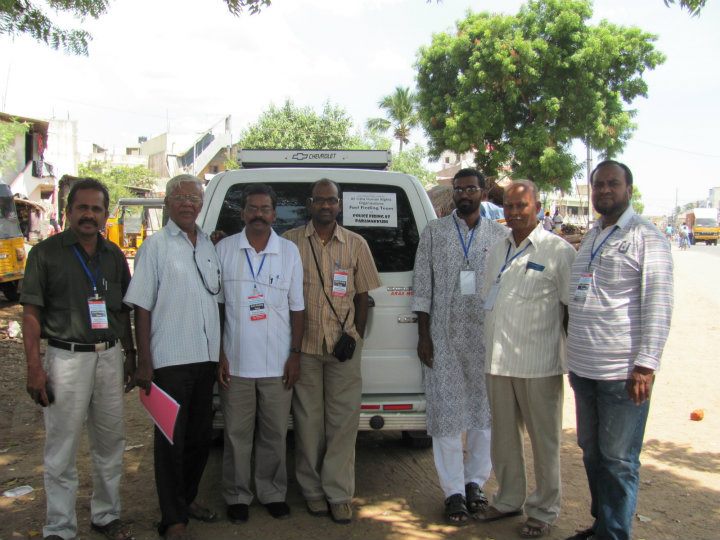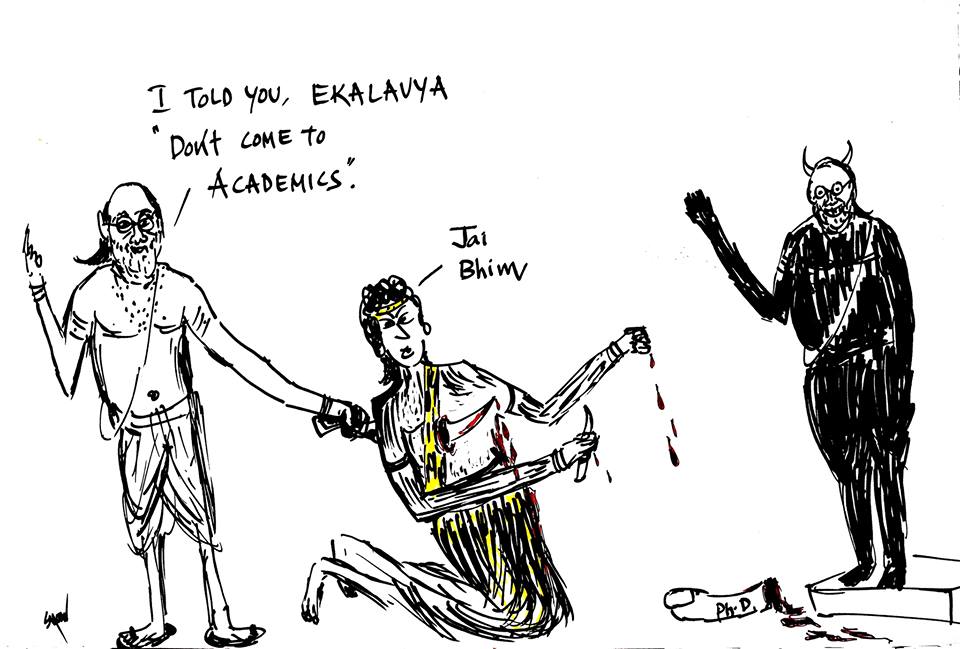Sinthujan Varatharajah
 The role of the LTTE in challenging the caste hierarchy in Eelam has been much talked about and documented. Much (valid) praise has been given to the organisation for its anti-casteist stance and attempts (not success) to overthrow casteism amongst Eelam Tamils. The LTTE has indeed played a significant role in caste history amongst the island population. What remains, however, often unsaid is that the LTTE, as an organisation founded by a medium caste against the backdrop of an upper-caste dominated political discourse, is also a product of caste history and embedded in power-struggles between caste groups. The resistance group’s caste policies have for a long time been used as a proof of the progressive nature of Tamil nationalism and the transformative changes Tamil society underwent since the emergence of the armed national liberation struggle in the mid 1970s. The LTTE’s social policies were thereby often assumed to respond and overlap with a general societal wish for social reform in regards to caste. This was, however, far from reality. The prohibition of caste practices was instead imposed upon a strongly caste stratified society, against the wishes of many of its upper-caste members.
The role of the LTTE in challenging the caste hierarchy in Eelam has been much talked about and documented. Much (valid) praise has been given to the organisation for its anti-casteist stance and attempts (not success) to overthrow casteism amongst Eelam Tamils. The LTTE has indeed played a significant role in caste history amongst the island population. What remains, however, often unsaid is that the LTTE, as an organisation founded by a medium caste against the backdrop of an upper-caste dominated political discourse, is also a product of caste history and embedded in power-struggles between caste groups. The resistance group’s caste policies have for a long time been used as a proof of the progressive nature of Tamil nationalism and the transformative changes Tamil society underwent since the emergence of the armed national liberation struggle in the mid 1970s. The LTTE’s social policies were thereby often assumed to respond and overlap with a general societal wish for social reform in regards to caste. This was, however, far from reality. The prohibition of caste practices was instead imposed upon a strongly caste stratified society, against the wishes of many of its upper-caste members.
Following the demise of the LTTE, a shift of scholarly focus took place from understanding caste formations pre-war and under the LTTE, to analysing the re-emergence of caste in Eelam post-LTTE. The much, yet not enough, narrated return of caste from the private to the public realm post-war confirms that the LTTE’s caste policies failed to overall annihilate caste. This is not to say that the LTTE’s policies didn’t change some dynamics and formations of caste, or that the LTTE didn’t aid to uplift certain Panchamar (Dalit) and lower caste groups, but this is to say that caste remains to be widely practiced by Eelam Tamils – despite the 38 years old resistance group. Today, this assertion remains strongly contested by many Tamil nationalists, particularly those of upper-caste origin.
Over the years, little focus has been given as to how the LTTE’s caste policies may have potentially negatively impacted and backfired in the quest of the annihilation of caste. Indeed, few have reflected upon how the LTTE’s strict policies of silencing discussions on caste derailed the possibility of fostering real social change and creating popular grassroots movements against caste in Eelam and abroad. It’s a taboo amongst many to openly critique that the resistance group reformed the caste status quo in a non-sustainable way and against the wishes of general society, similar to how India legally enforced a ban on untouchability but failed to socially ostracize caste practices amongst wider society. Similar things can be said about the LTTE’s gender policies, which are today praised by many nationalists without analysing how they may have failed to actually liberate women as seen in the case of former female LTTE cadres who are today often ostracized by sections of a very patriarchal society. Gender parity amongst Eelam Tamils is far from achieved, whether in the homeland or its diasporas. Again, this is not to say that the LTTE’s social policies weren’t progressive, which they were (relatively), but to say that they had very clear limits and flaws and were set against the social norms of wider society.

Returning to the question of caste, a multiplicity of reasons can be traced to understand the shortcomings of the LTTE’s reform programme. The by far most important one was the LTTE’s need to accommodate Tamils of all castes in its state-building project set against the Sinhalese-dominated state. The militant group couldn’t afford upsetting the dominant Vellalar community, which held land and power as well as a numerical superiority in the Tamil heartland of Jaffna. Therefore, they struggled to overthrow and eliminate Vellalar supremacy without risking the loss of their political and material support. The issue was heightened by the formation of the Eelam Tamil diaspora, which remains a predominantly Jaffna Vellalar diaspora whose remittances were crucial to sustain the independence project at home. The LTTE was thus effectively forced to negotiate precarious caste lines without undermining the national struggle against a strong external enemy. As a result, the LTTE struggled to eradicate casteism from the surface of society despite its many attempts to reform and break caste culture. Today, caste remains deeply embedded in the social fabrics of Eelam Tamils and continues to be centered around Vellalar (secular) supremacy (informed by Saiva Hindu Brahminism).
Today, when talking about caste amongst Eelam Tamils, the default position amongst old and young remains to be that the LTTE successfully eliminated the violent system. According to them, caste is no more an issue of the present but one of the past. This belief is widespread amongst stern supporters of the independence project, particularly those of dominant caste origin. The LTTE has for many become a rhetoric tool, a weapon used to deflect from creating space and capacity to reassess our social status quo which would potentially expose the flaws of their social programme. More importantly, it would reveal the continuance of Vellalar (and male) hegemony in all spheres of life, whether at home or abroad. The resistance against such discussions is particularly and unsurprisingly widespread amongst members of the Vellalar community, but not exclusive to them. For many Eelam Tamils of different caste origins, the fear of the Sinhalese state pushes them to a forceful unification, a de facto Burgfrieden, at all costs and at all times. This evidently leads to the censorship of open discussions about controversial intra-societal themes that could lead to disunity and polarisation, such as caste or gender. Caste as a pre-modern system of social organisation, however, trumped the modern assertion of linguistically-based nationalism and failed to be overcome in spite of strong postcolonial assertions of Tamilness and a political Burgfrieden in place.

With the end of the war in 2009 and the elimination of the LTTE, discussions about caste in Eelam and its diasporas continue to face a socially enforced clamp down from many sides. Maybe an even stronger one than ever before. While social, political and educational institutions fail to respond to caste issues at home, discussions on caste abroad are hijacked by a LTTE-centric discourse. Nowadays it seems to be impossible for many to divorce discussion on caste from the urge to highlight the LTTE’s necessity and its many positives (yet silence on its shortcomings and negatives). While talking about caste we today talk more about the LTTE than caste in itself. Considering that the LTTE has often been criticized and torn apart by outsiders, without acknowledging its many remarkable achievements, this seems to be a natural and even a human reaction. It is nonetheless also a socially violent response. By doing so, they whitewash the flaws of the organisation, particularly those to be traced in its social program, while also obstructing future attempts and possibilities of reforming society. They equally dismiss and suffocate dissent, particularly voices that are marginal to the national discourse and people who remain underrepresented and invisible in it. Constructive and productive critique, whether internal or external, has for long been unwanted and silenced through different means. Unlike the widespread assertions of many Tamil nationalists, including the relatively progressive ones, caste is today solely and exclusively discussed via the prism of the LTTE. If it is discussed at all.
Thereby the LTTE’s role in regards to caste is generally overemphasised, and also its successes exaggerated and used as a way to deflect from taking social responsibility and owning the societal issues that Eelam Tamil society faces. Instead of openly talking about how caste has continued to linger on despite the LTTE, you’re made to believe that their politics have broken the caste system in its foundations. It, however, did not. Far from it. In a recently published piece in Round Table India, the author framed the LTTE’s caste reforms as politics ‘towards the annhiliation’. This is a popular rhetoric play used to distort and deflect from the fact that the annihilation of caste has been far from achieved. No, caste has reclaimed many of its positions post-war, post-LTTE. To contextualize the push back faced when talking about caste, we need to, however, also locate the voices that enunciate opinions that decentralise and destabilise discussions about caste.
Unlike many present day Indian-centric caste discourses, particularly on Round Table India, the caste locus of the articulator or writer is hardly ever in question when it comes to discussions on caste in Eelam. The drive to self-identify or for outside identification to map their bodies, politics and locate their epistemological realities simply does not exist. Few will ask what caste does the writer or speaker belong to unless the content is caste critical and challenging of the societal status quo. The privilege to invisibilise their caste, their caste-based experiences and biases is one that is monopolised by those who are of dominant caste origin. Their caste locus can accordingly be easily ejected and rejected. They have also found plenty of means to distract from it, hide it and negate it. For the most part we see members of upper castes monopolising the discussion while silencing and obstructing the emergence of voices from below. Voices that challenge the present and past status quo are not just aggressively countered but also personally attacked and slandered.

The centre of knowledge production has remained in the hands of the upper caste, who write our histories without acknowledging the flaws rooted in their own social location and the violence they reproduce by not just dismissing but also suffocating voices from the margins. Many of these relatively young and progressive Eelam Tamil (mostly diasporic) writers and activists aren’t necessarily casteist, but by attempting to limit, silence and suffocate discussions on caste beyond the scope of the LTTE, they are as oppressive as the casteists. The mechanisms used to derail caste discussions that go beyond the realm of the LTTE, which touch spheres left untouched by the LTTE’s caste politics, are no different than those of the castesists. For both it appears as a threat, because of their personal implications in these systems of social organisation and the hegemonic structures they represent and reproduce. By doing so (opposing caste discussions), they often succeed in pushing people away, corrupting safe spaces and silencing victims of caste discrimination from sharing their own experiences and opening up a dialogue that may start a process of societal healing, as envisoned by the LTTE. They equally push away people of dominant caste origin who would potentially be interested in interrogating the current caste locus and their own positionality in it by not just criminalising caste discussions but also negating the importance and need for it.
Today, the LTTE’s caste policies are used by many Tamil nationalists to absolve Tamil society as a whole of casteism – as if the LTTE’s caste project was a bottom up process of social engineering and was based upon a wider social consensus. While two generations of old and young Tamil nationalist activists, scholars and writers continue to push against the opening up of the floor on caste independent of the LTTE, it is important, particularly for those of oppressed but also dominant caste backgrounds, to counter these dynamics and create spaces for voices of difference to emerge. In times when Dalit and lower caste writing and knowledge production is on the rise in South Asia and in its diasporas, in times when we carve out spaces for us to breathe and articulate our experiences and opinions, we need to counter the streams that attempt to limit and obstruct the mainstreaming of our ideas, works and experiences.
The Sri Lankan state surely has vested interests in exploiting caste differences amongst Eelam Tamils (in the past and present), but to shift responsibility for their existence and their maintenance post-war, post-LTTE to the Sri Lankan state is just another attempt to deflect from taking actual responsibility. We somehow lose all our agencies when talking about caste, as if we have always been the pawn of someone else and as if intra-societal oppression always needs to stand in relation to the Sri Lankan state. As if social violence was never our responsibility but that of someone else. If caste was eradicated, as argued by some, why do we remain so uncomfortable and become so aggressive when talking about caste? Why are we trying so hard to silence those who speak of the continuing existence of caste discrimination at home and abroad? And why is it that the voices heard the loudest are also those who come from upper-caste origin? How do we explain the marginality of Panchamar (Dalits) in our quest for knowledge production? And how is it that I remain one of the few who write about caste who have openly revealed my own caste, or rather non-caste, origin?

To talk about caste in Eelam and outside, should never, as claimed by some Tamil nationalists, exclusively be tied to the LTTE’s social project. Caste exists with or without the LTTE, in and outside of them. Our experiences of caste are not necessarily always tied to them and their ideas on it. They are neither always positively informed by the LTTE. Caste should never be a discussion that ought to be restricted to the LTTE and be made only possible via the LTTE, as wished, socially policed and enforced by some Tamil nationalists. The LTTE attempted to unite Eelam Tamils against the Sinhala-dominated state while equally attempting to heal Eelam Tamil society from its caste wounds. By silencing discussions on caste and oppressing voices from below we aren’t healing though but continuing the process of hurting. To use the LTTE, who remain to be an important Tamil symbol of caste resistance against upper-caste dominance and caste oppression, to further oppress and dominate Panchamars (Dalits) and lower castes does a great disservice to their ideals of imagining a society free of caste inequalities and oppressions.
Caste goes beyond the LTTE.
~~~
Sinthujan Varatharajah is a PhD candidate in Political Geography at the University College London and the Founder of Roots of Diaspora (www.facebook.com/rootsofdiaspora), a narrative project on refugees and migration of Tamils from Sri Lanka. He previously researched questions on caste in migration and diaspora for his master’s thesis at the London School of Economics and Political Science.You can follow him on Twitter @varathas
Pictures courtesy (from top to bottom): dbsjeyaraj.com; lankasrinews.com; dailynews.lk;rogerhagmann.com.









